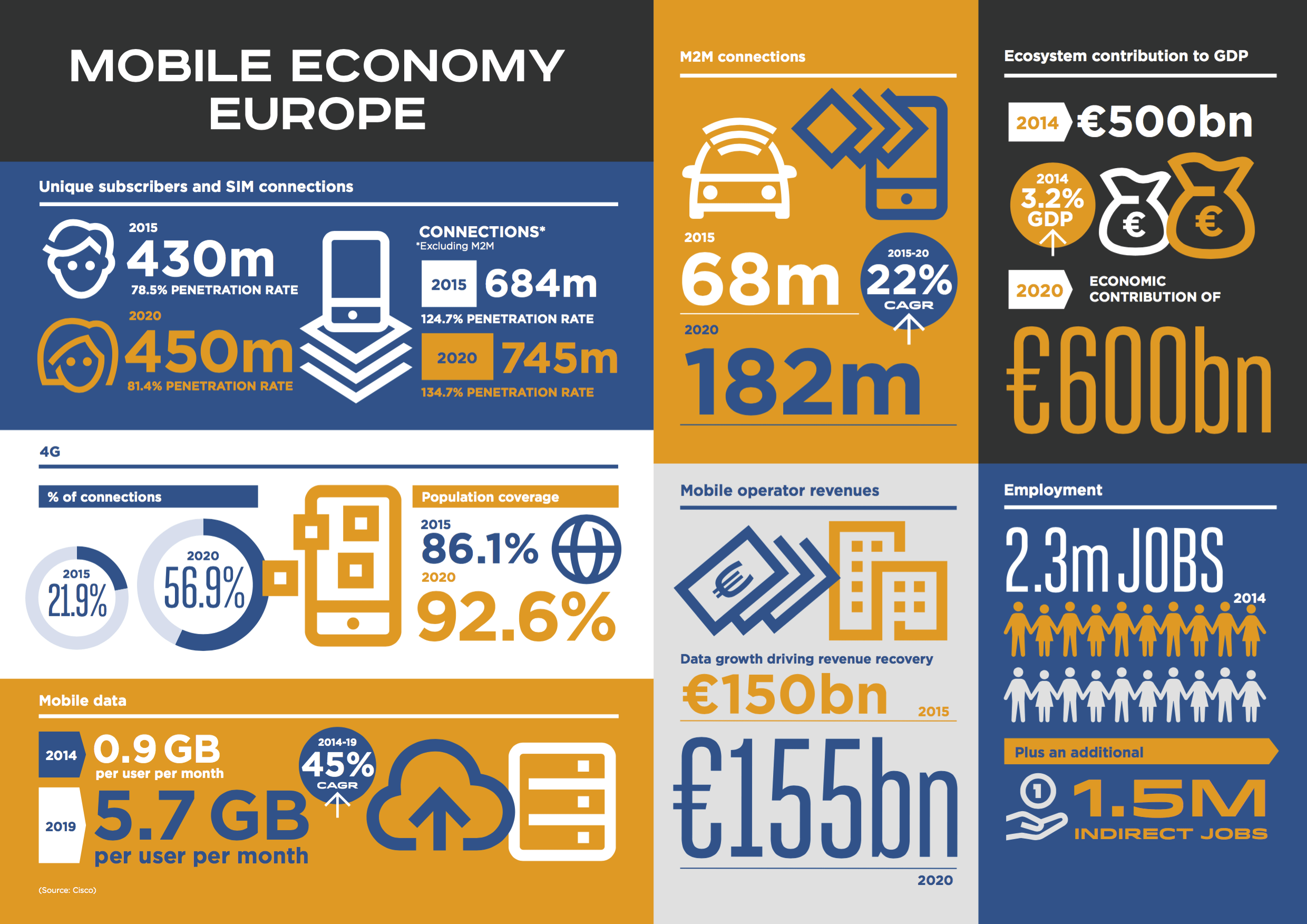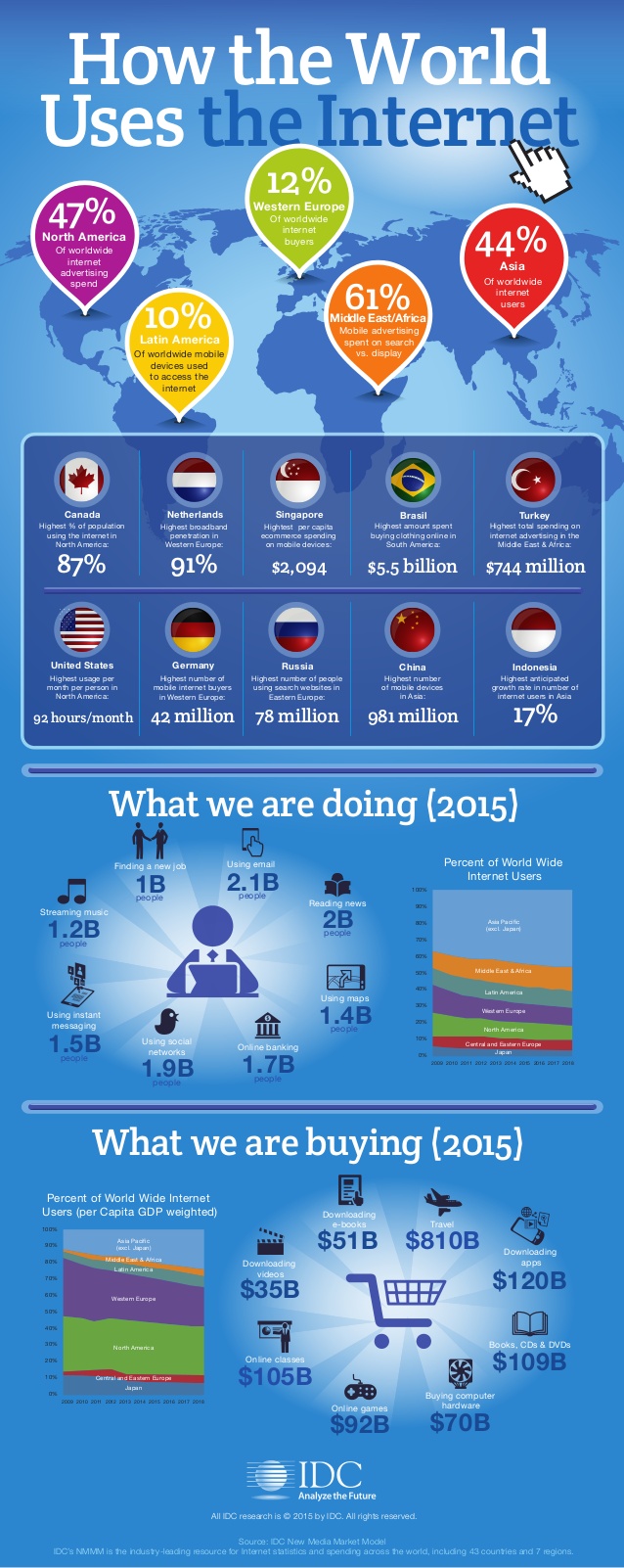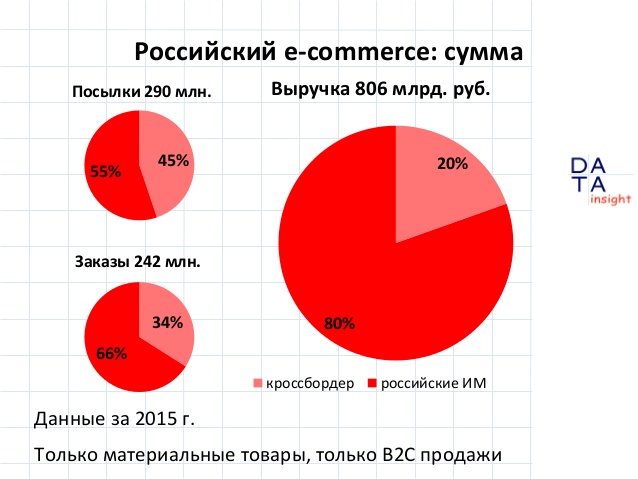Analytical digest "Internet analytics" (Zero issue)
The number of publications on the Internet and related markets is so large that it is often impossible to keep track of them. There are a huge number of research and analytical agencies in the world, the data of which are mentioned in the Russian-language press, but, as a rule, without the publication of references to source materials. This moment has always caused me some confusion.
On the first working day of this year, I made a timid attempt to consolidate the incoming flow of analytical reports that are publicly available and put them on public display, indicating the original source, comparing figures and facts, as well as a personal look at what is happening. The result was a short story that allows you to touch on this or that topic from various angles and allow a particularly inquisitive reader to easily get to the original source and draw their own conclusions.
This is my first article on Geektimes.
From it you can learn about the key global studies of the impact of the Internet on the economy and the latest reports in the field of e-commerce.
Studies devoted in one way or another to the impact of the Internet on the economy are conducted by quite a few organizations and associations. Of the most reputable global ones, the World Bank , GSMA , and of the Russian ones - RAEC can be distinguished.
')
The World Bank's Digital Dividend Report was released last week. The main conclusion is that the cumulative effect of the use of digital technologies turned out to be weaker than expected and is unevenly distributed. In order to maximize the potential of the digital revolution, countries need to deal with “analogue additions”: to improve legislation to ensure competition between companies, to bring workers' skills into line with the requirements of the new economy and to ensure the accountability of institutions. Answers to the question “how to do this?” Are mainly in the main English version of the report (359 p.), A little less information in the Russian version (58 p.). There are also short abstracts in Russian (4 p.).
GSMA approaches analytics a little differently - the association assesses the contribution of the economy of Internet-related markets to the GDP of the country in question. Their reports provide an overview of the current state and trends in the development of the so-called mobile economy . The contribution of the mobile industry and broadband access to the economic and social development of the region is emphasized. You can get acquainted with the mobile economy of different regions of the world here: world , Europe , Africa , Asia , Arab Emirates , Indonesia and the islands , India , North America .

Unfortunately, you will not find Russia in any of the submitted documents. This “gap” in some way “closes” the Russian Association of Electronic Communications , which has already published the annual study “Economics of Runet” four times, which is almost completely consistent with the content and methodology of the reports of GSMA and the World Bank. For example, according to the study, the volume of all Internet markets (content and services) amounted to 1094 billion rubles by the end of 2014, and the volume of the electronic payments market was 476 billion rubles, which is equivalent to 2.2% of Russia's GDP in 2014. . And the estimation of the volume of the economy of Internet-dependent (or Internet-related markets) markets amounted to more than 11.8 trillion rubles, which is comparable with 16% of Russia's GDP.


These associations, in terms of the Runet audience, agree with IDC forecasts , which forecast the availability of Internet access in 2016 for 3.2 billion people, or 44% of the world population, of which 2 billion will use mobile devices.

In addition to such global studies, there are reports covering a separate market or field of activity.
For example, one of the most reputable audit firms, Deloitte , recently updated its annual report “The World Retail Sector” , summarizing the activities of the 250 largest global companies in the reporting fiscal year (June 2014 - July 2015). According to the report, American Walmart is still the largest retailer in the world. All six Russian public players: Magnit, X5 Retail Group, Dixie, Lenta, M.Video and O'Key retained their positions in the list of the largest retailers.
In my subjective opinion, in the Russian e-commerce segment, the analytic championship belongs to the agency DataInsight , which almost simultaneously with Deloitte published the first results of the Russian market #ecommerce for 2015 . According to their information, the e-commerce market grew in rubles by 16% and the total volume reached 650 billion rubles. In the context of domestic Russian online sales, the average bill increased by 300 rubles (from 3,750 rubles in 2014 to 4,050 rubles in 2015), but it also fell in dollars by $ 23 (from $ 90 to $ 67 - a fall of 25%). The number of online orders in foreign online stores in 2015 increased by 75%. The average bill averaged $ 31 per order and $ 18 per package. The share of online purchases (orders) made in foreign online stores increased from 24% in 2014 to 34% in 2015.

For the first trial time, that's all. The idea of consolidating open (and not so much) data seems workable to me.
At the moment I plan on weekly on Monday night to publish here the most interesting materials from all those that caught me on the Internet. I would be happy to comment on the improvement of the method of presenting information, content, format and the general need for such content.
Thank!
On the first working day of this year, I made a timid attempt to consolidate the incoming flow of analytical reports that are publicly available and put them on public display, indicating the original source, comparing figures and facts, as well as a personal look at what is happening. The result was a short story that allows you to touch on this or that topic from various angles and allow a particularly inquisitive reader to easily get to the original source and draw their own conclusions.
This is my first article on Geektimes.
From it you can learn about the key global studies of the impact of the Internet on the economy and the latest reports in the field of e-commerce.
Studies devoted in one way or another to the impact of the Internet on the economy are conducted by quite a few organizations and associations. Of the most reputable global ones, the World Bank , GSMA , and of the Russian ones - RAEC can be distinguished.
')
The World Bank's Digital Dividend Report was released last week. The main conclusion is that the cumulative effect of the use of digital technologies turned out to be weaker than expected and is unevenly distributed. In order to maximize the potential of the digital revolution, countries need to deal with “analogue additions”: to improve legislation to ensure competition between companies, to bring workers' skills into line with the requirements of the new economy and to ensure the accountability of institutions. Answers to the question “how to do this?” Are mainly in the main English version of the report (359 p.), A little less information in the Russian version (58 p.). There are also short abstracts in Russian (4 p.).
GSMA approaches analytics a little differently - the association assesses the contribution of the economy of Internet-related markets to the GDP of the country in question. Their reports provide an overview of the current state and trends in the development of the so-called mobile economy . The contribution of the mobile industry and broadband access to the economic and social development of the region is emphasized. You can get acquainted with the mobile economy of different regions of the world here: world , Europe , Africa , Asia , Arab Emirates , Indonesia and the islands , India , North America .

Unfortunately, you will not find Russia in any of the submitted documents. This “gap” in some way “closes” the Russian Association of Electronic Communications , which has already published the annual study “Economics of Runet” four times, which is almost completely consistent with the content and methodology of the reports of GSMA and the World Bank. For example, according to the study, the volume of all Internet markets (content and services) amounted to 1094 billion rubles by the end of 2014, and the volume of the electronic payments market was 476 billion rubles, which is equivalent to 2.2% of Russia's GDP in 2014. . And the estimation of the volume of the economy of Internet-dependent (or Internet-related markets) markets amounted to more than 11.8 trillion rubles, which is comparable with 16% of Russia's GDP.


These associations, in terms of the Runet audience, agree with IDC forecasts , which forecast the availability of Internet access in 2016 for 3.2 billion people, or 44% of the world population, of which 2 billion will use mobile devices.

In addition to such global studies, there are reports covering a separate market or field of activity.
For example, one of the most reputable audit firms, Deloitte , recently updated its annual report “The World Retail Sector” , summarizing the activities of the 250 largest global companies in the reporting fiscal year (June 2014 - July 2015). According to the report, American Walmart is still the largest retailer in the world. All six Russian public players: Magnit, X5 Retail Group, Dixie, Lenta, M.Video and O'Key retained their positions in the list of the largest retailers.
In my subjective opinion, in the Russian e-commerce segment, the analytic championship belongs to the agency DataInsight , which almost simultaneously with Deloitte published the first results of the Russian market #ecommerce for 2015 . According to their information, the e-commerce market grew in rubles by 16% and the total volume reached 650 billion rubles. In the context of domestic Russian online sales, the average bill increased by 300 rubles (from 3,750 rubles in 2014 to 4,050 rubles in 2015), but it also fell in dollars by $ 23 (from $ 90 to $ 67 - a fall of 25%). The number of online orders in foreign online stores in 2015 increased by 75%. The average bill averaged $ 31 per order and $ 18 per package. The share of online purchases (orders) made in foreign online stores increased from 24% in 2014 to 34% in 2015.

For the first trial time, that's all. The idea of consolidating open (and not so much) data seems workable to me.
At the moment I plan on weekly on Monday night to publish here the most interesting materials from all those that caught me on the Internet. I would be happy to comment on the improvement of the method of presenting information, content, format and the general need for such content.
Thank!
Source: https://habr.com/ru/post/367685/
All Articles